ALIF’s guided tour of المدينة القديمة (the Old Medina) began around 10:00am on Saturday. It was actually supposed to begin about an hour earlier, but it seems everyone else had switched to Maghrebi time (i.e., show up whenever you want… it seems to be the norm in Morocco. Or maybe it’s just the norm for American students in Morocco). The tour started outside the Old Medina with a visit to a monument that had something to do with Moroccan independence. I couldn’t hear what our tour guide was saying, but I’m guessing it’s the manifesto drafted by the Istiqlal Party in 1944, since Morocco didn’t gain its independence from France until 1956.
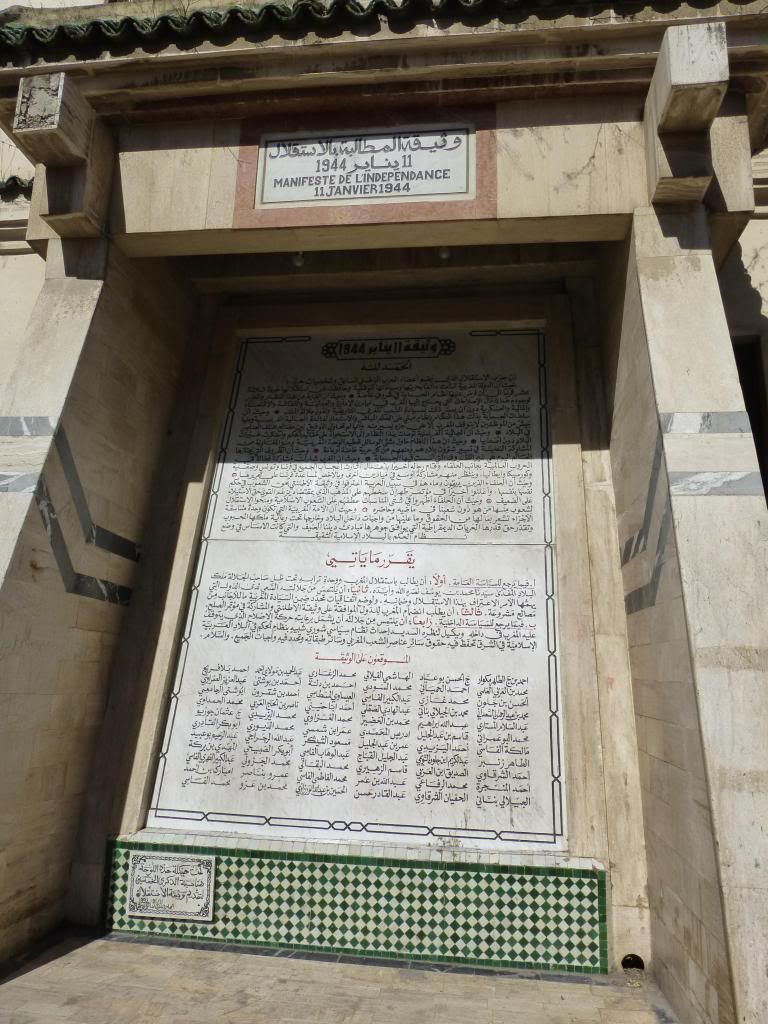
Much of the Old Medina is surrounded by very old walls. The more iconic entryways are marked by intricate gateways, such as this one. I believe it’s called the Blue Gate (why wouldn’t it be?).
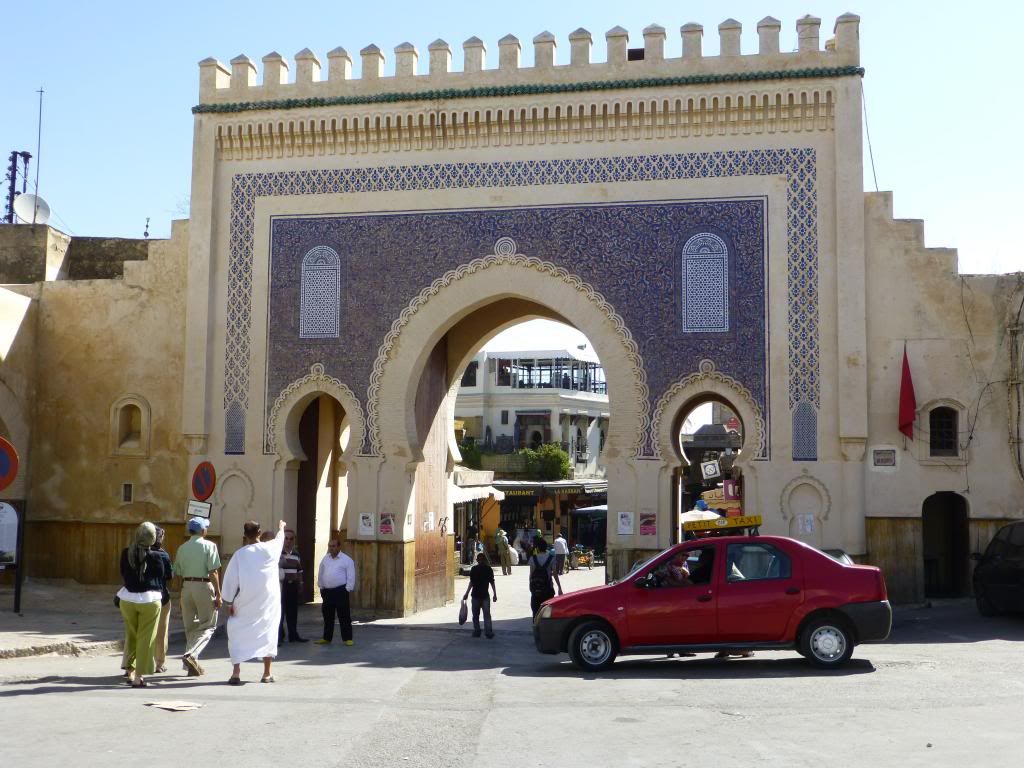
Once you pass through the gate, you’re in the Old Medina!

The place is truly a maze, in the best possible use of the term. You never know what’s around the next corner. You might be walking through a large, open area flanked by cafés, then suddenly find yourself in the shade of a covered market, or سوق.

I was instantly reminded of Istanbul. The covered market really is ingenious—it gives you protection from the sun, while still allowing the natural light to seep through so you can see.
Our next stop was a historic مدرسة (school) that doubled as a mosque… I think (this was all a couple weeks ago, so my memory’s a bit fuzzy). I know there were prayer rooms and a fountain for cleansing, so at the very least students could use it as a mosque. Apparently students could live on-campus, and wooden screens covered their study areas so they could see what was going on in the courtyard without being seen themselves.
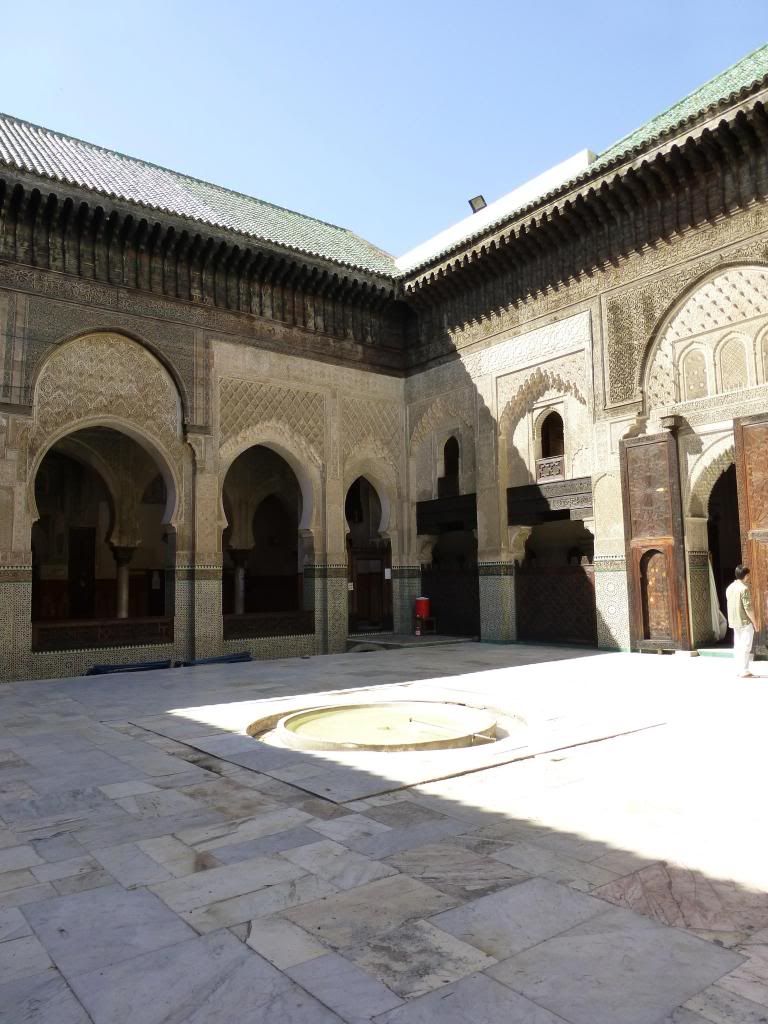
Of course, the entire school is completely covered in intricate Arabic calligraphy. Driss was able to read some of the Classical Arabic text, which is no easy feat.
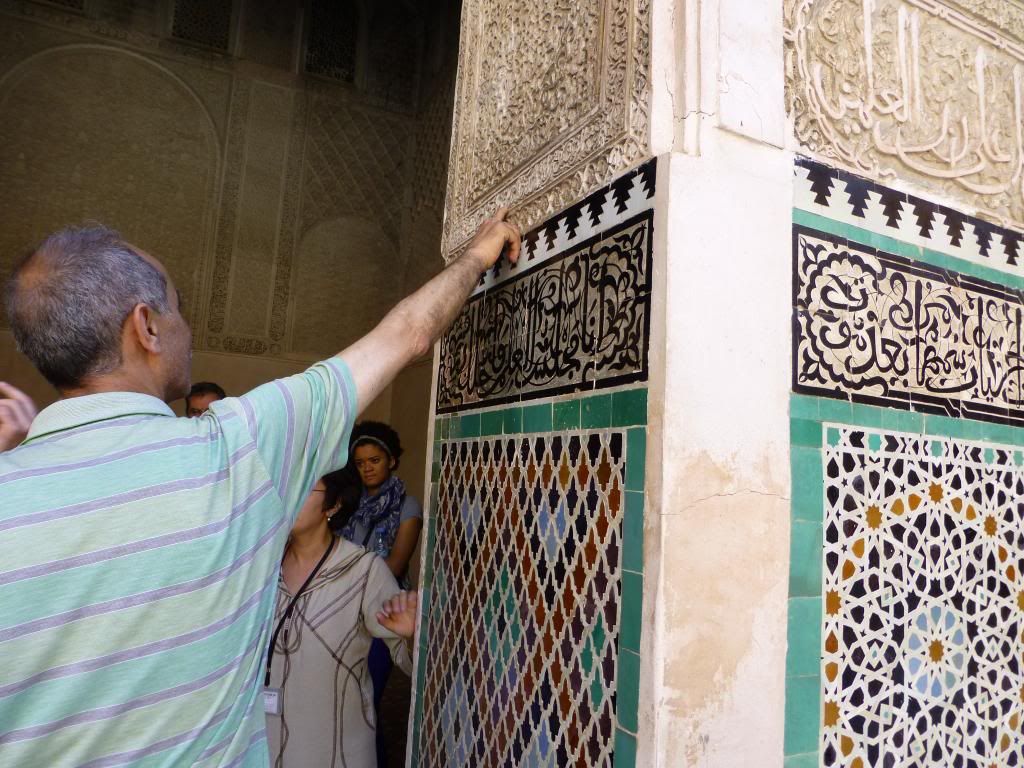
If you’re not paying attention while walking down the streets of the medina, it’s very easy to miss some interesting sights, such as this beautiful fountain.

The sheer amount and diversity of goods for sale in the medina is mind-boggling. Many streets are lined by shops offering trinkets and necessities side-by-side.

There are narrow streets, and then there are narrow streets. As our group navigated a street of the latter category, I turned around and got a shot of Cody illustrating just how narrow the alleyways in the medina can get.

One of the most confusing things about the Old Medina is figuring out whether an alleyway actually goes somewhere, or whether it will simply end at someone’s front door, which would be an awkward situation. The good thing about going with a guided group is that you don’t have to worry about where you’re going, you can just soak in the scenery, which is what I did that first weekend. As you’re walking down the street, all you need to do is look to the left or the right and you’re guaranteed to see something interesting, be it a shop, a street, or an entryway to someone’s house.

Looking straight ahead, you’re guaranteed to get some interesting shots as well. Also, there’s Ahmed (in the pink shirt) and Driss.
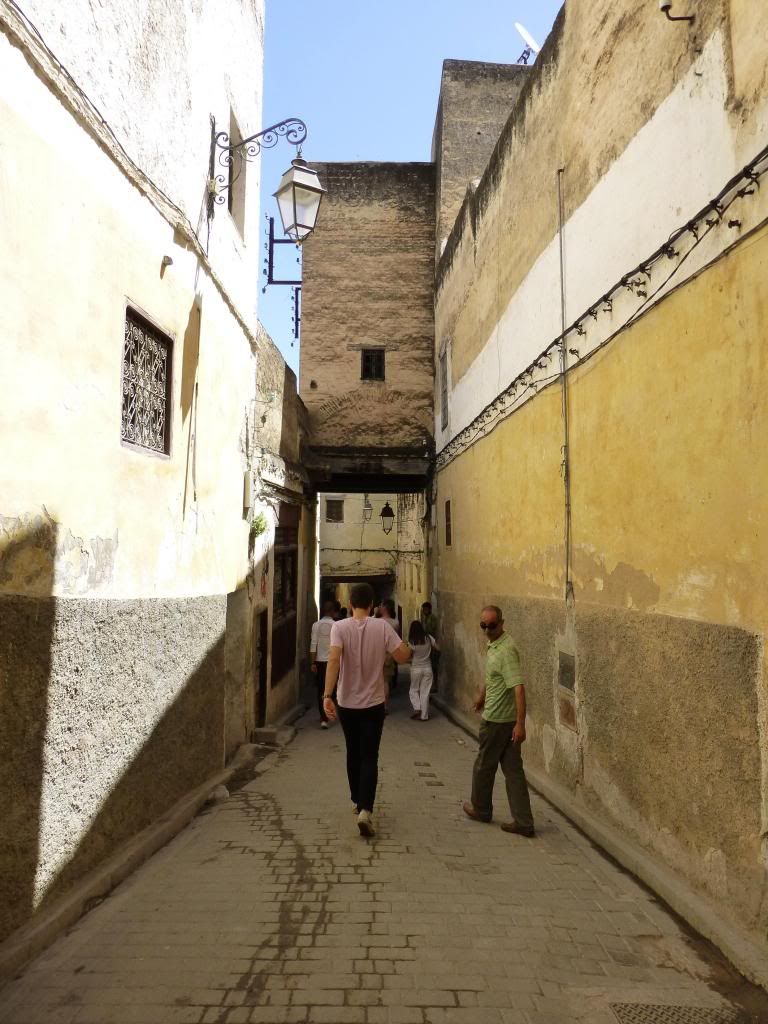
Okay, pretty much anywhere you point your camera in the Old Medina, you’re gonna get a fantastic picture.
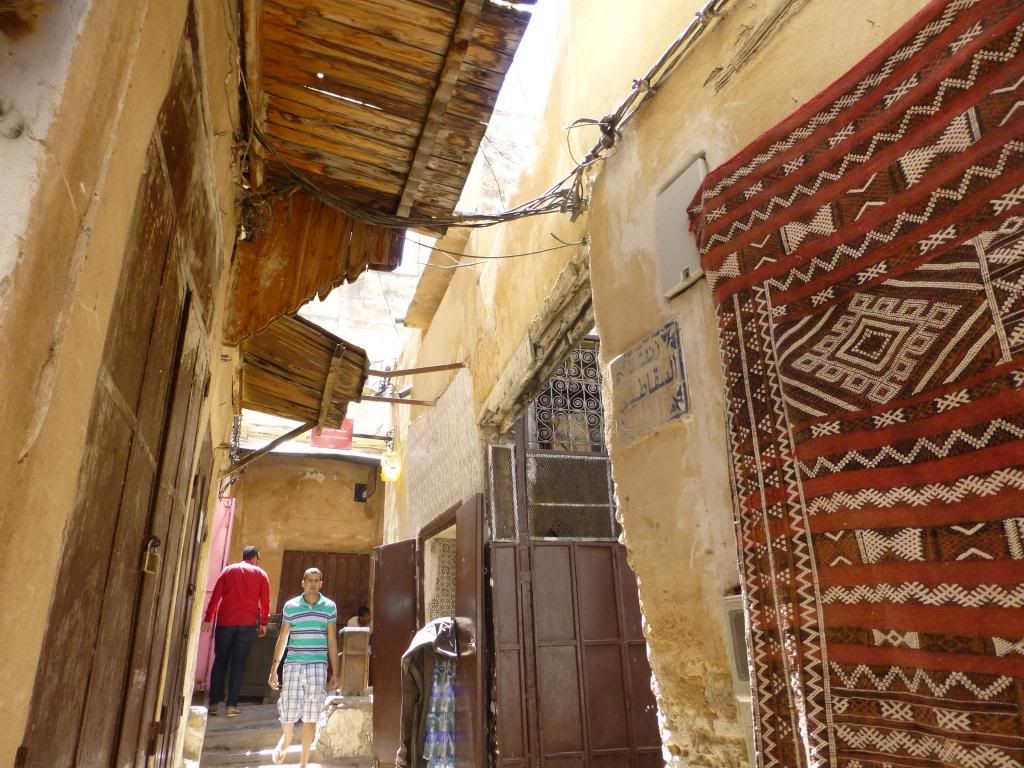
We eventually wound up on this covered street where craftsmen make wedding… carriages? I’m not sure what to call them. Newly-wed brides sit on these fancy white seats and people carry them around for a while. One of the artisans whipped out a photo book and showed us some wedding pictures, which was interesting (and kind of funny). I mostly was just interested in the way these thin bendy trees had grown alongside the buildings, twisting upwards towards the wooden street covering.
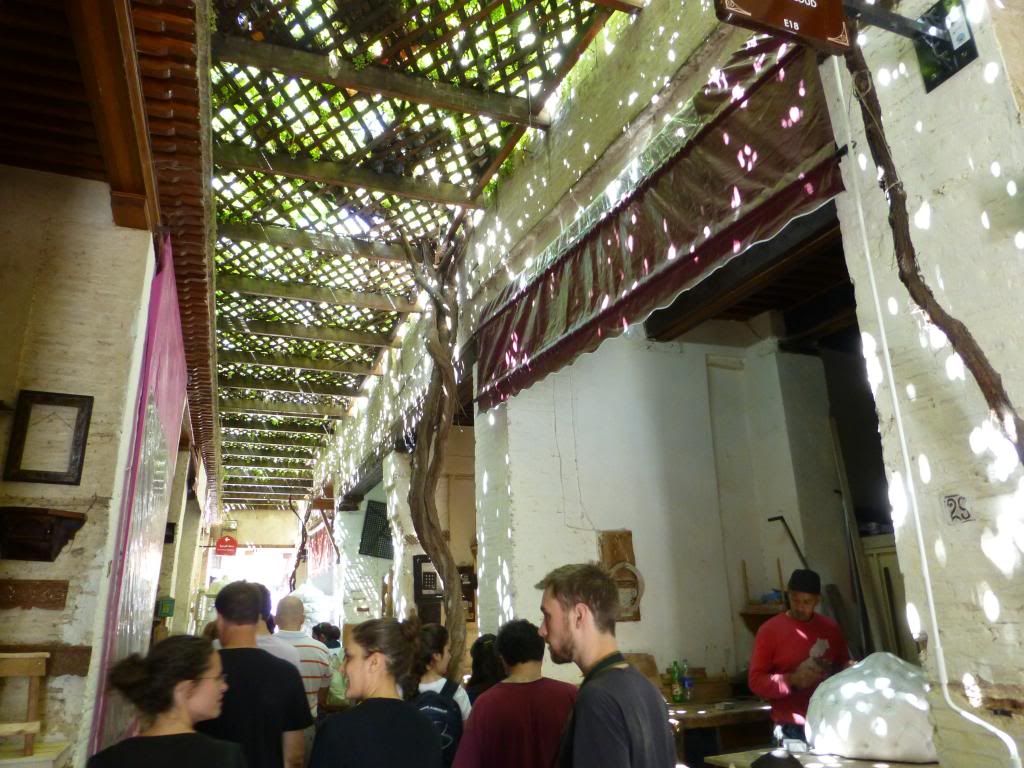
Like I said, when you walk through the Old Medina, you never know what’s around the corner. There’s just so many wildly different things packed into the city, all connected by thin, winding streets. After walking through the wedding carriage street, suddenly we were out in another open area with a madrasa and some shops, as well as another awesome fountain. Also, there’s Driss again in the left-hand corner.
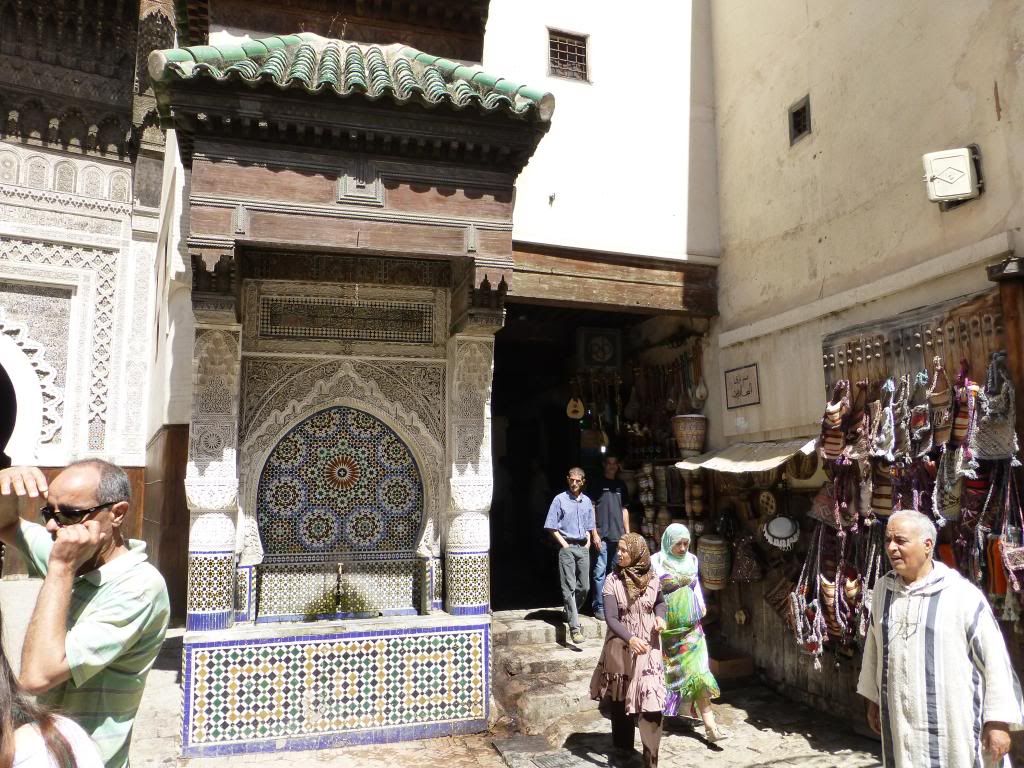
Here’s another fun fact. If I’m not mistaken, the fez (as in the small, red hat) originated in—you guessed it—the city of Fes, before being adopted by the Ottomans. But I have never seen anyone in Morocco wearing a fez, apart from people on billboards and TV shows… and this hat merchant who tried to sell a fez to one of the girls in our tour group.
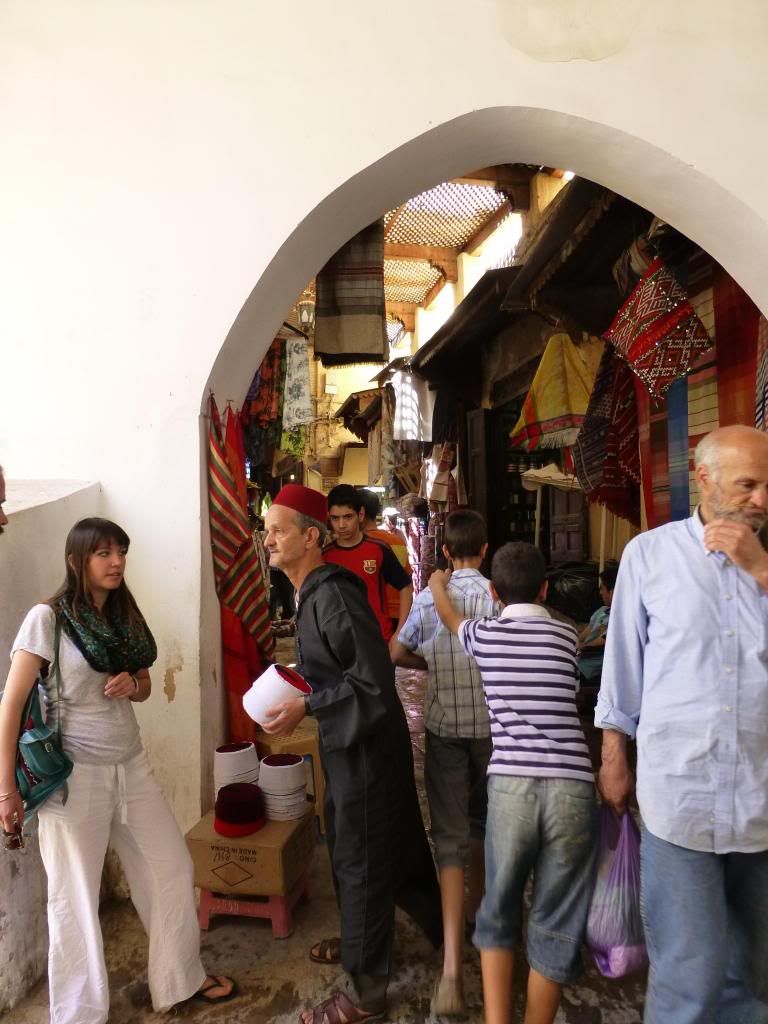
Here’s another shot of a typical street in the Old Medina.
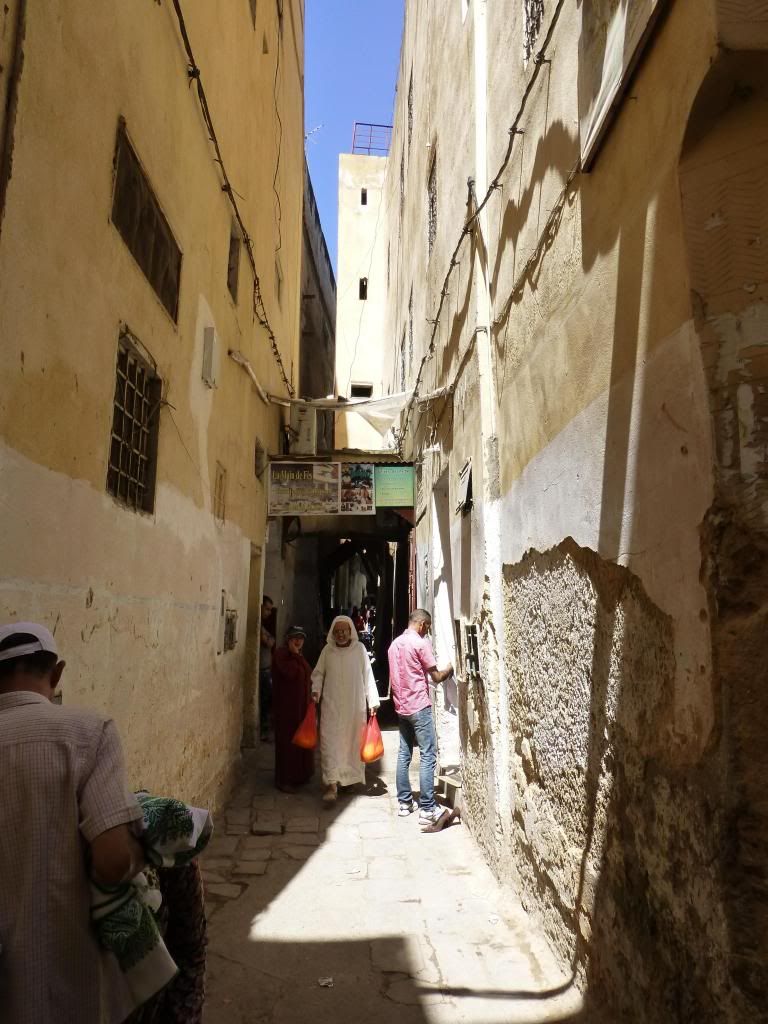
I gotta point out the ingenuity of the medina’s design. All those tall buildings and narrow streets pretty much guarantee shade from the sun, which is a must in this heat. Also, because there’s so much shade, there’s very little reflection of sunlight from the ground. The Old Medina feels several degrees cooler than the Ville Nouvelle, to me. The people who built these crazy cities knew what they were doing.
Some time into the tour, our guide led us into a funduq, a walled off courtyard where artisans of a specific craft gather to work their magic.

This particular funduq was filled with scarves. I wound up buying a pretty cool-looking gray/black/white scarf for 50 dirhams (about 5 dollars). I also got a nice shot of one of those… cloth… thingies. I forget what they’re called.
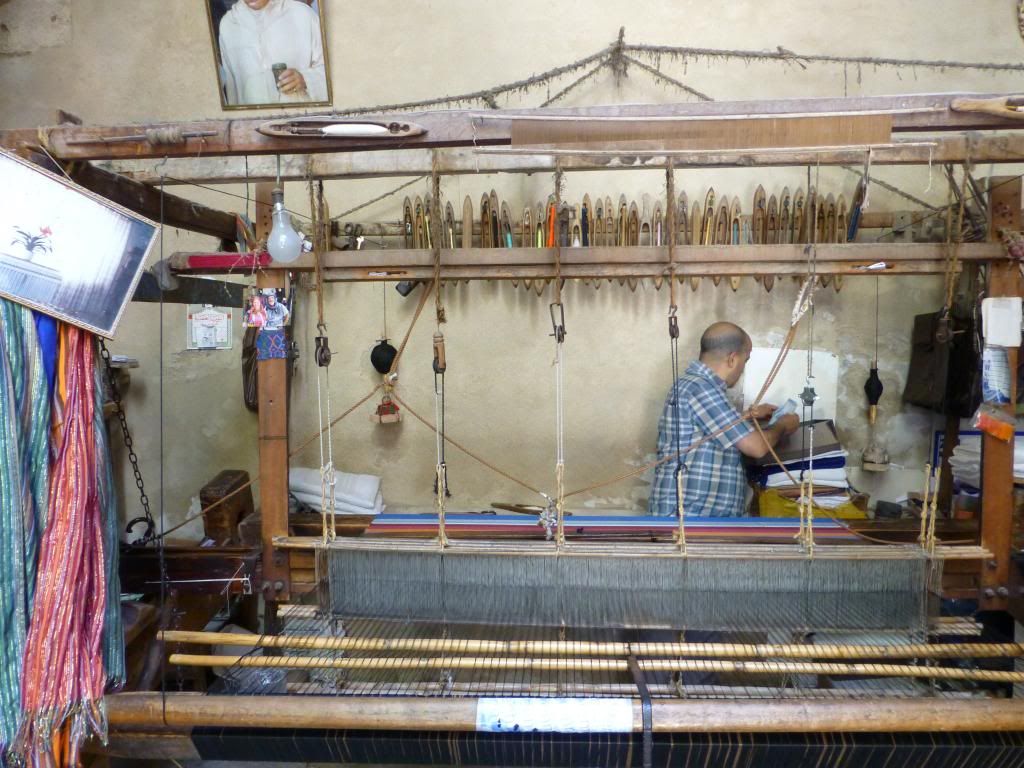
Many of the sights in the Old Medina feel like they come straight out of a dream. Something about the way the sunlight falls upon the walls brings with it a sort of déjà vu, and many times I felt like I had been here before, a distant memory of a forgotten dream gurgling forth from the recesses of my mind. Here’s a picture of one such sight.
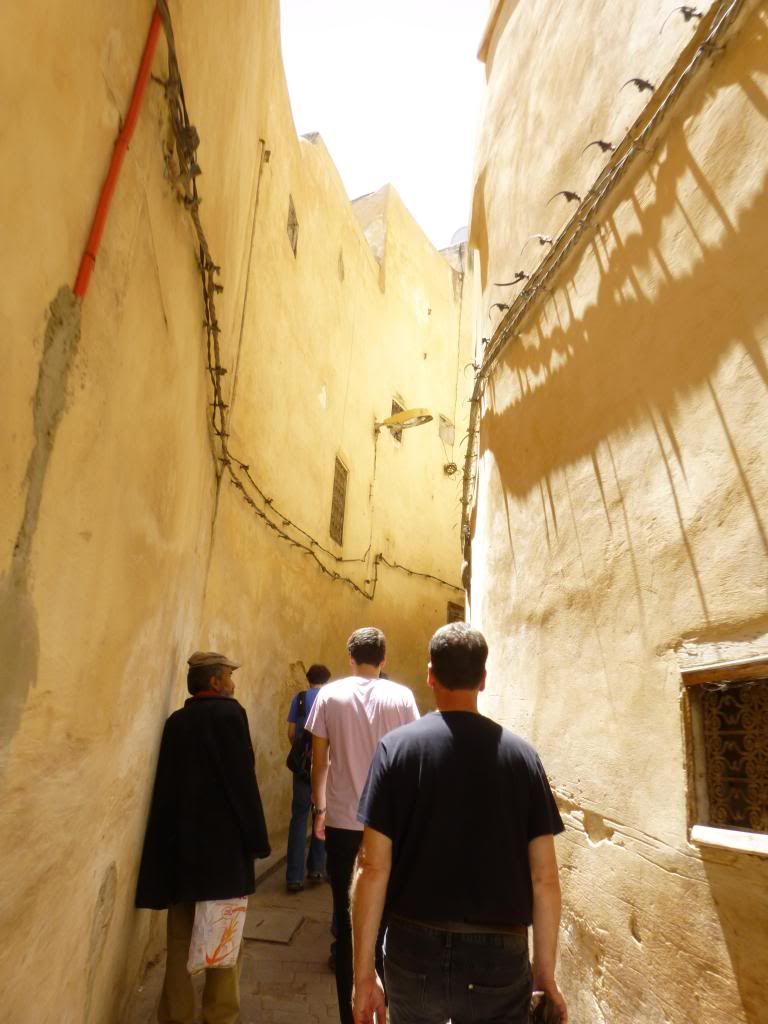
At one point in our tour, we stopped by a spice shop. The walls were lined with innumerable jars of spices, some labeled in English, most in Arabic. The shopkeeper explained the nature and purposes of several different herbs, spices, perfumes and colognes as his wife came around to each of us with samples. There was this one… thing, I’m not even sure what it was, but you’re meant to plug one nostril and breathe it in as deeply as possible with the other. Whatever it was I sniffed, I felt it gripping the nerves of my spinal chord in the back of my neck, if that makes any sense. Afterwards, I felt like my head had been cleared. It was an odd experience.
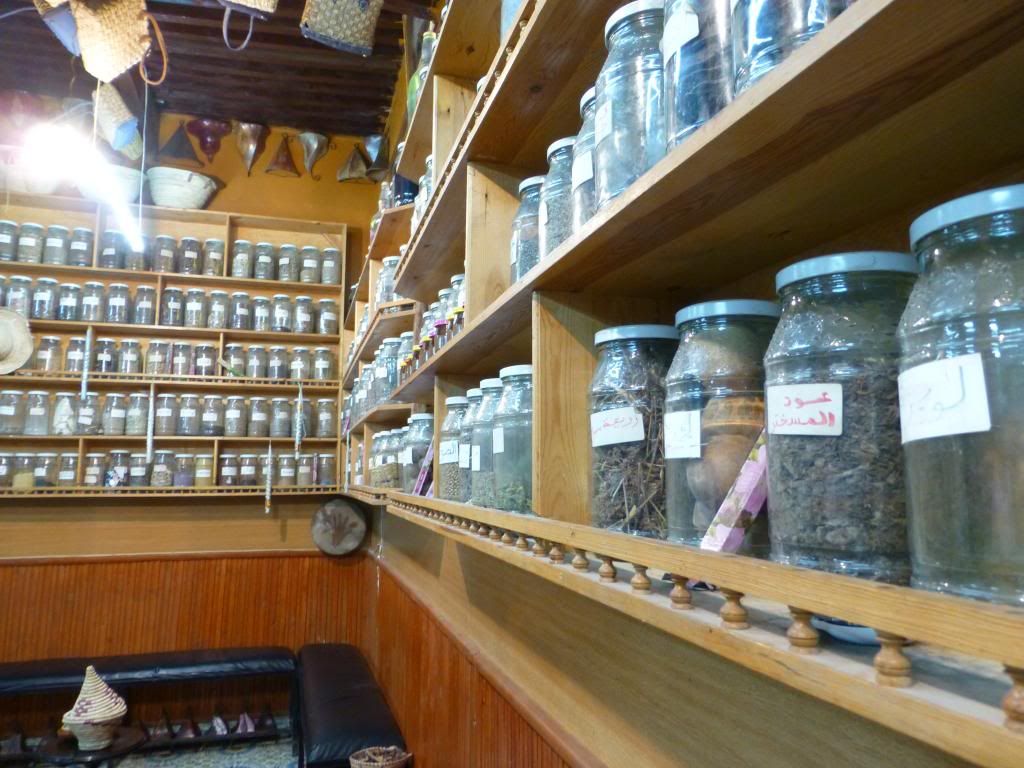
As some of the students in our group purchased some spices, I took a picture of an interesting array of tools and bowls full of… stuff, all laid out on the ground.
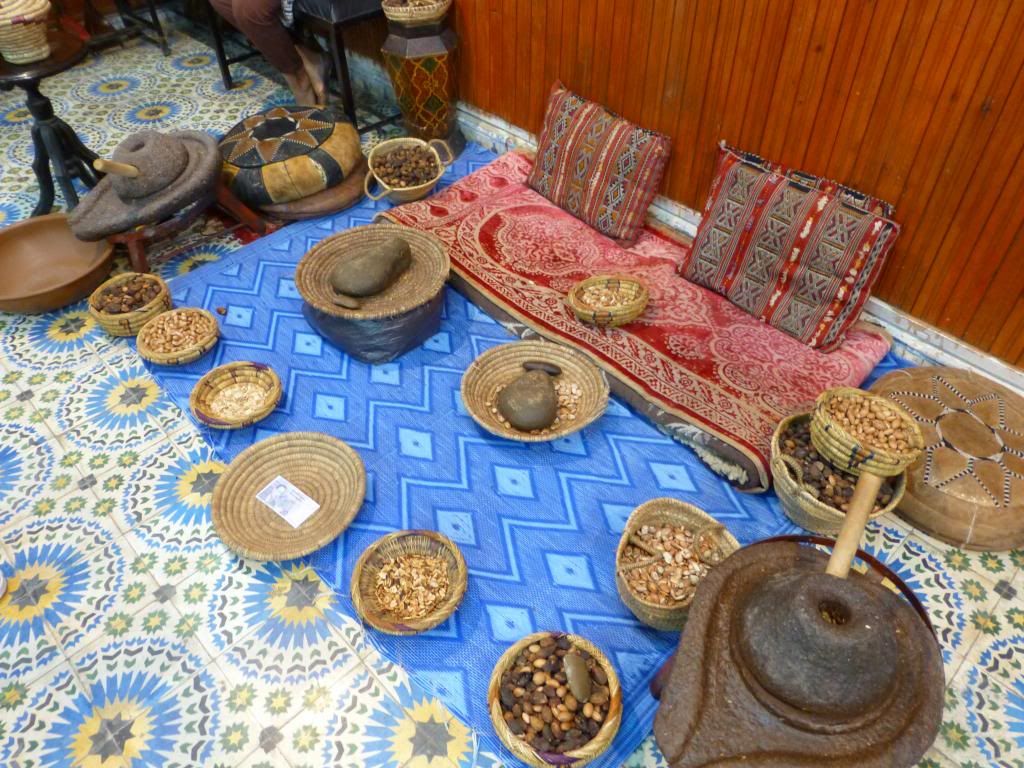
I’ve seen those stone grinders all over Morocco. They look positively ancient… It’s pretty awesome that something like that is still in use.
Finally we arrived at one of the most distinctive sights in Fes: the tannery.
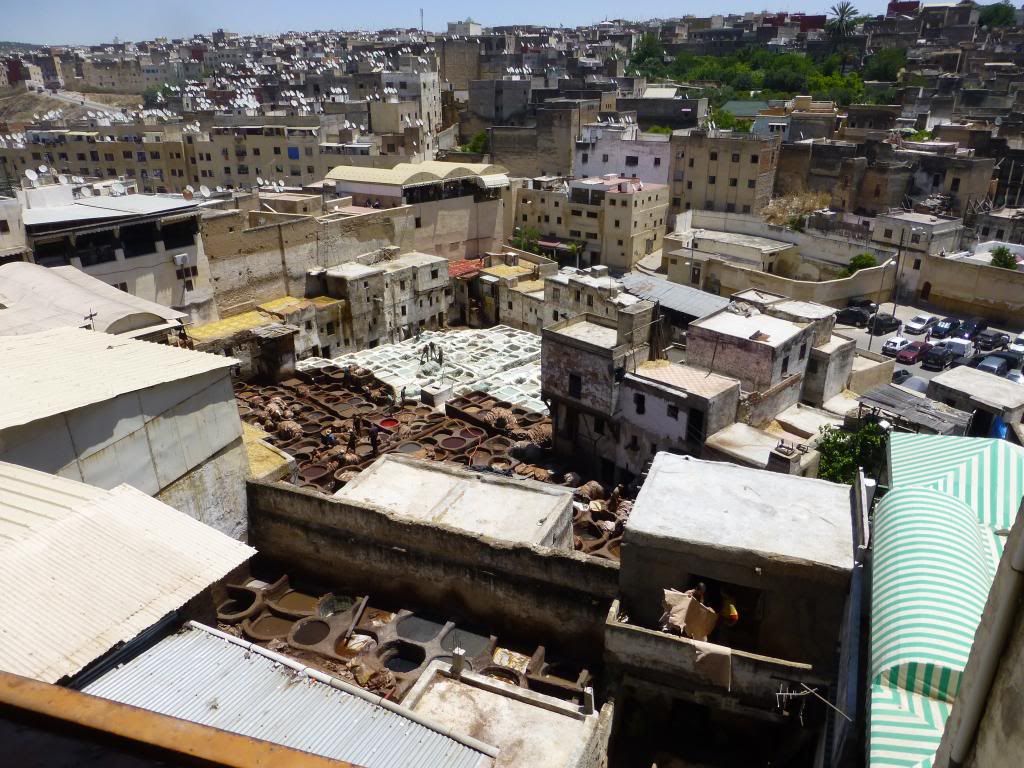
We were each given a mint leaf twig for the smell as we ascended the stairs of one of the many leather stores surrounding the tannery. We wound up in a breezy room high above the ground, with an awesome view.
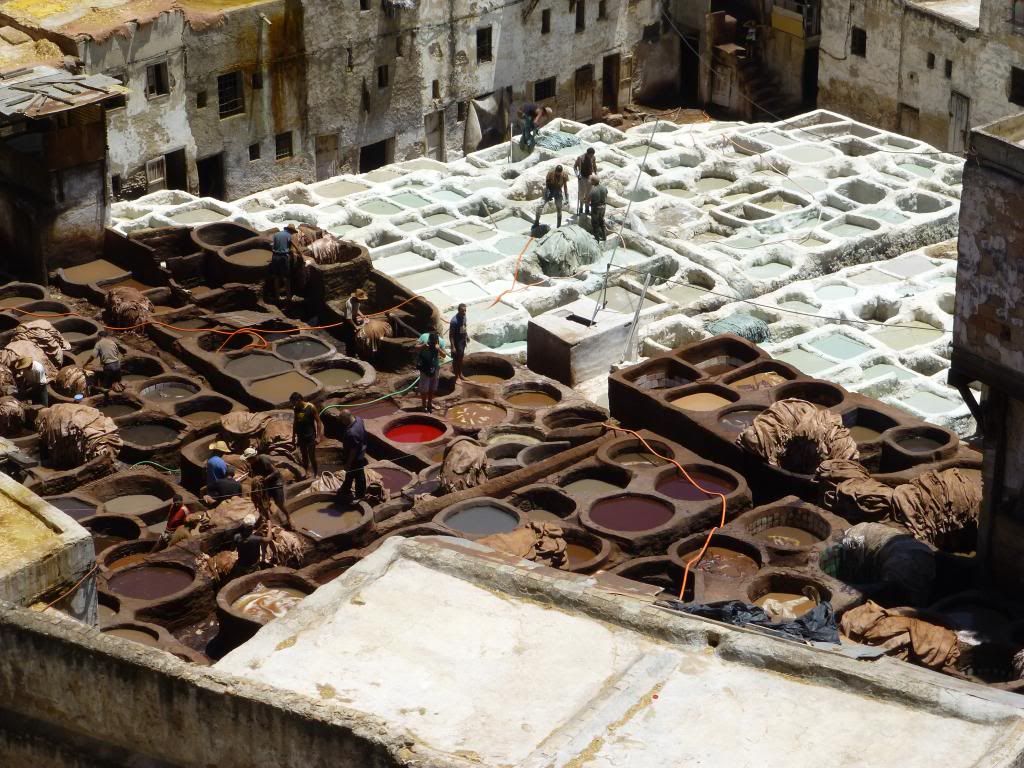
I’ve always heard about how horrible the tannery is supposed to smell, but I didn’t think it was bad at all. Maybe I just have a stunted sense of smell, but in all the travelogues I’ve read of Fes, people seem to blow the smells of the city way out of proportion. Or maybe since I went in expecting a full-on “assault on the senses”, I was more prepared, and so it hasn’t bothered me as much? No idea.
I also got some great camera shots of the surrounding buildings and countryside. I’m so used to cable TV that the army of satellite dishes perched atop peoples’ houses really stuck out. Driss made a humorous remark that even if a family in the Old Medina might not have access to water, they’ll still have a satellite dish.
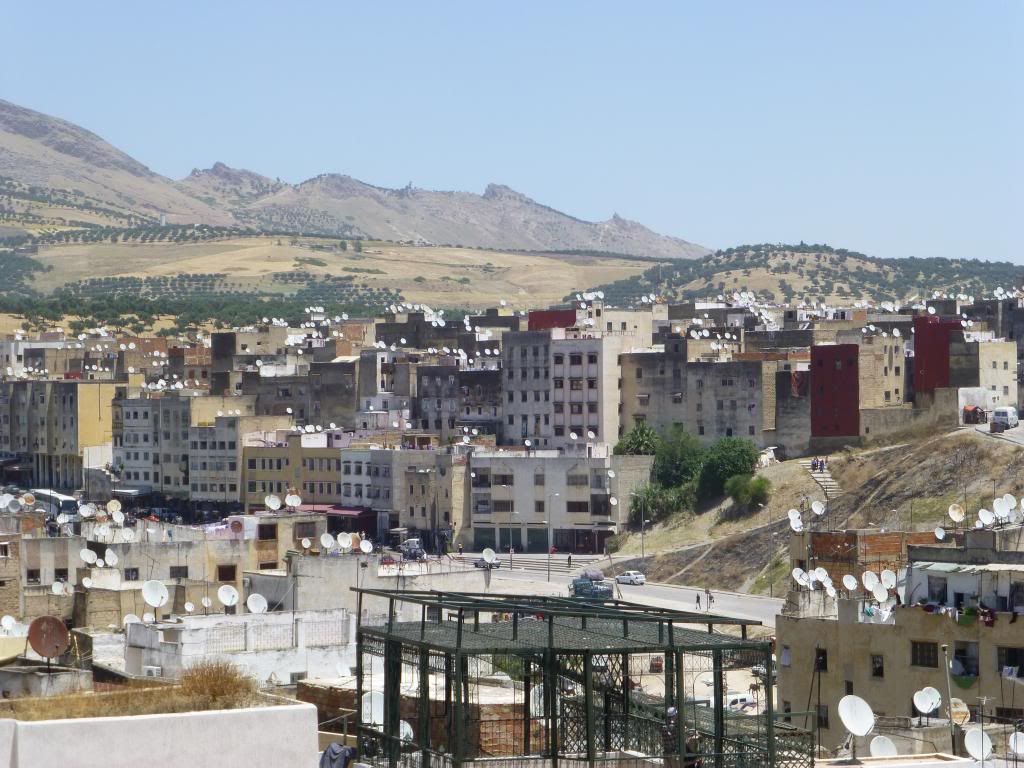
At last our grand tour of the medina came to an end. We arrived at another little plaza, our journey at an end. You can sort of make out a donkey being saddled with a massive load of… something in the right-hand side of this picture.
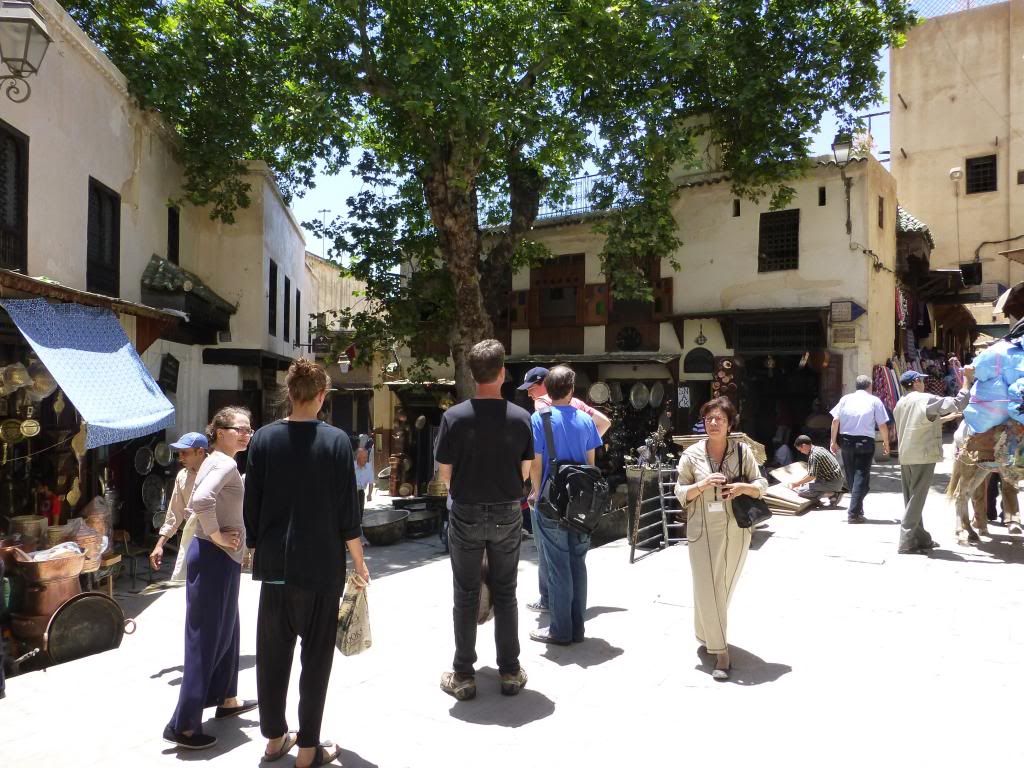
That’s another thing I should mention. All the stuff that people are selling in the Old Medina has to get there somehow, right? But the streets are way too small for any cars or trucks. The answer: donkeys. There are some horses as well, but it’s mostly just donkeys, carrying burdens of epic proportions. When one of these donkeys is heading down the street you’re walking on, you have to squeeze yourself up against the walls to make room. It can actually be quite shocking if you’re not expecting it—there were times when I was walking through masses of people and was suddenly startled by a donkey head popping out of the crowd as the beast walks past me.
As our tour ended, individuals within our group peeled off. Cody, Ahmed, Driss and myself headed towards the outskirts of the Old Medina to find a taxi back to Batha.
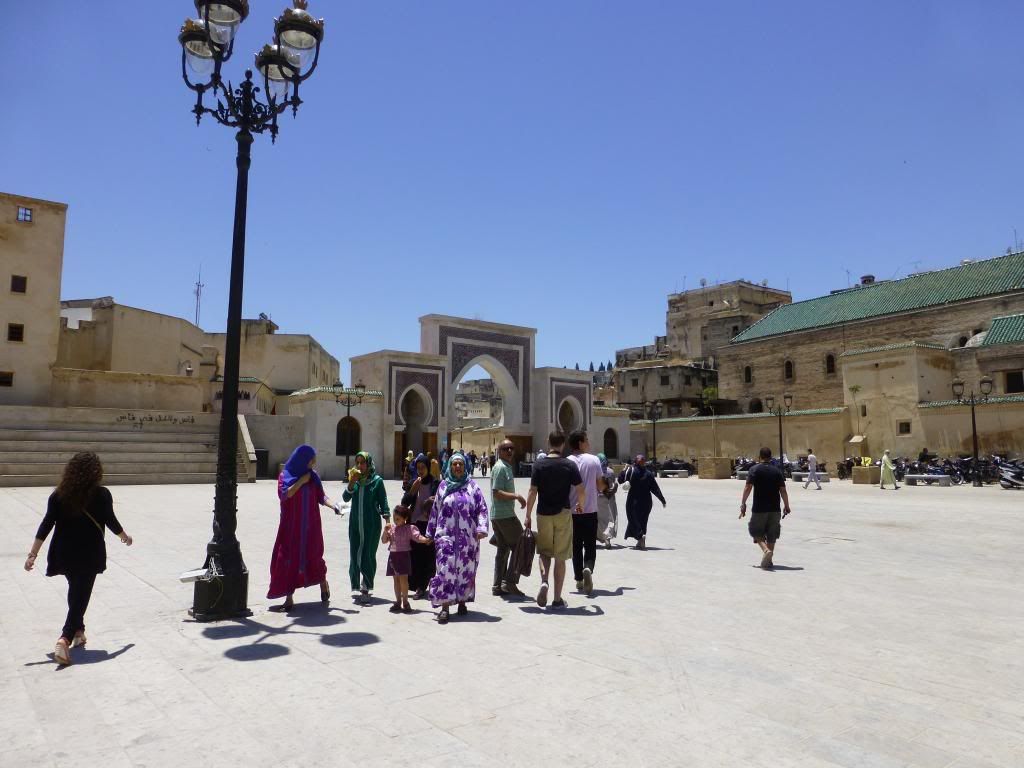
And so we wound up at a very busy street. While we waited for a cab, Ahmed and I bought some home-made straw hats from an elderly man on the street, in preparation for our excursion to Volubilis, where we expected long hours with little shade. The last picture I took before we scrambled for our taxis was this building that Cody pointed out because it had a funny-looking muscle man on it.
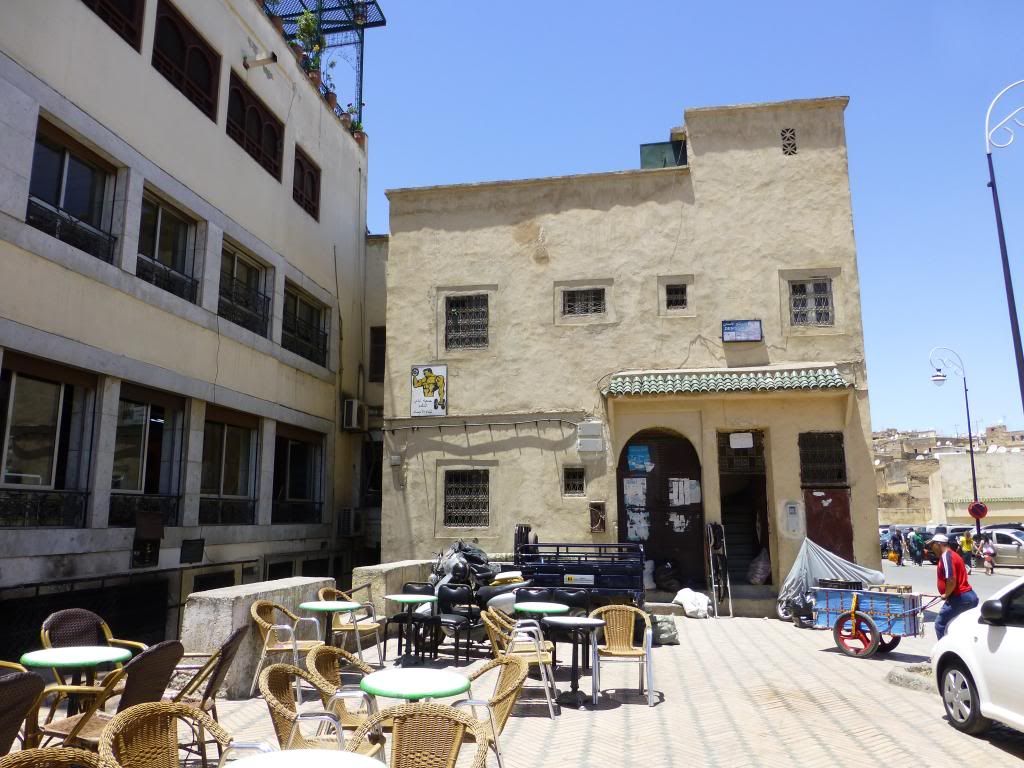
And that wraps up my (and your) tour of the Old Medina. The flow of life in the Old Medina is definitely a lot different from anything I’m used to, but at the same time, it doesn’t feel entirely alien. Not sure what to make of that. Anyways, that does it for this entry. Until next time!

Thank you for this amazing tour through the Old Medina. Your photos beautifully illustrated what you were writing about, and I felt like I was a member of your student group. Michele